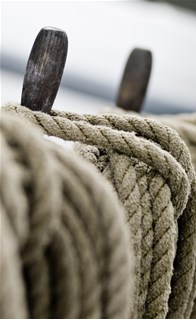|
By: Jeroen Berger, May 18, 2018 (updated) Shipping company Rederij Doeksen, which provides ferry services from, to and between Harlingen, Terschelling and Vlieland, has recently ordered two new “single fuel” LNG-powered ferries. Our partner Orcan Energy AG from Munich (Germany) will deliver the efficiency PACKS (waste heat recovery systems) on board of these LNG vessels. The passenger ships sail between Harlingen and the Dutch Wadden Sea Islands Terschelling and Vlieland and it is expected that these vessels will be delivered by the end of 2018 and will be operational at the beginning of 2019.
What was the challenge of Rederij Doeksen?
Rederij Doeksen, based in Harlingen, aims to be a modern, efficient and market-oriented service provider, with market-based rates and a strong “green” image. For example, the shipping company encourages sustainable partnerships with entrepreneurs to make the products Terschelling and Vlieland tourist more attractive and to increase the number of visitors. It has been the challenge at Rederij Doeksen to design not only environmentally friendly passenger ships, but also to build in a cost-efficient way.
How has Rederij Doeksen addressed this challenge?
First of all, the two ferries of Rederij Doeksen will sail on LNG. This contributes to a significant reduction of the emissions of harmful substances from the gas engines. Think of a reduction of 30 percent CO2 and 100 percent reduction in NOx and SOx. In addition, the ferries are made of aluminum to reduce the weight of the ships, to reduce emissions further and to save on fuel costs.
What has Orcan Energy contributed to this?
The “single fuel” LNG-powered catamaran ferries (each 70-metre long) will be equipped with efficiency PACKS (waste heat recovery systems) from Orcan Energy AG. In each passenger ship comes two LNG engines, one in each hull. For the main and auxiliary engine, one efficiency PACK will be added. These waste heat recovery systems will increase the efficiency of the engines and reduce the fuel consumption and CO2 emissions.
How does the waste heat recovery system of Orcan Energy work?
The waste heat recovery system from Orcan Energy AG is based on the Organic Ranking Cycle (ORC). The ORC solution works with a refrigerant (R245fa), which already "boils" at 15 degrees Celsius (°C) at atmospheric pressure. Via a simple screw expander the vapor will be directly converted to rotational energy. This screw expander operates at a much lower speed and has a flat efficiency curve over a wide operating range, in contrast to a steam turbine.
How will the waste heat be used in the new ferries?
The outcome (active power) from one efficiency PACK is 100 kW as a maximum. This depends on the volume and intensity of the heat source (the quantity of the main and auxiliary engines). The generators are of the asynchronous type, which is converted into direct current (DC) by a frequency converter for the purpose of the batteries. Both of the battery packs are charged during the crossover, and during transmission and mooring of the ferries, via inverters, deliver power to two electric bow thrusters. Otherwise, two diesel or gas generators would be needed.
| |
| |
|
Your information will be kept confidential. See our privacy policy for more information. |
Waste heat recovery system "single fuel" LNG ferries business case




